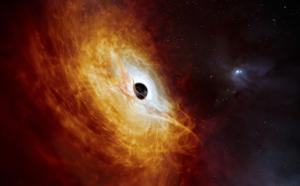The Discovery of Black Holes: From Theory to Direct Observation
The journey to discover black holes spans more than two centuries, evolving from theoretical predictions to direct observations that have revolutionized our understanding of the universe. These cosmic entities—regions of spacetime where gravity is so intense that nothing, not even light, can escape—have captivated scientists and the public alike. The story of their discovery represents one of astronomy’s most fascinating chapters, combining theoretical physics, observational breakthroughs, and technological innovation.
Early Theoretical Foundations
The concept of what we now call black holes dates back to the 18th century, long before they were directly observed. In the 1780s, John Michell, described by astrophysicist Becky Smethurst as “a priest by day, an astronomer by night, one of those classic figures of early science,” theorized about “dark stars”—objects so dense that light couldn’t escape their gravitational pull. This remarkably prescient idea emerged nearly 200 years before black holes were confirmed.
The theoretical foundation for black holes was substantially strengthened in 1915 when Albert Einstein published his theory of general relativity, which described how massive objects distort the fabric of spacetime. Just one year later, in 1916, Karl Schwarzschild solved Einstein’s field equations for uncharged, spherically symmetric non-rotating systems, mathematically describing what would later be recognized as a black hole. Schwarzschild’s solution identified the concept of an “event horizon”—the boundary beyond which nothing can escape a black hole’s gravity.
Despite these theoretical advances, the term “black hole” wasn’t coined until much later. For decades, these objects remained purely theoretical constructs, with many scientists—including Einstein himself—skeptical about whether such extreme objects could actually exist in nature.
The First Detection: Cygnus X-1
The breakthrough in black hole discovery came in 1964 when Geiger counters aboard a sub-orbital rocket detected a powerful X-ray source in the constellation Cygnus. This object, designated Cygnus X-1, would eventually become recognized as the first observed black hole.
However, the path to confirming Cygnus X-1’s nature wasn’t straightforward. X-rays don’t penetrate Earth’s atmosphere, so observations required space-based instruments. Further investigations revealed that Cygnus X-1 was part of a binary system with a visible companion—a blue supergiant star called HDE 226868. The enormous X-ray emissions couldn’t be explained by the star alone, suggesting the presence of a hidden, extremely compact object.
In 1971, astronomers Paul Murdin and Louise Webster provided compelling evidence that Cygnus X-1 contained a black hole. Their observations showed the visible star was orbiting an invisible companion that was too massive to be a neutron star—the only reasonable explanation was a black hole.
The Famous Black Hole Bet
The discovery of Cygnus X-1 sparked one of the most famous scientific wagers in history. In 1975, theoretical physicists Stephen Hawking and Kip Thorne made a bet about whether Cygnus X-1 actually contained a black hole. Hawking bet against it, while Thorne bet it did. Hawking later explained this was a form of “insurance policy”—since he had done extensive work on black holes, if they turned out not to exist, at least he would win the bet.
By 1990, the evidence for Cygnus X-1 being a black hole had become so compelling that Hawking conceded the bet. According to Thorne, Hawking and his colleagues broke into Thorne’s Caltech office while he was away in Moscow and left Hawking’s thumbprint on the concession. Recent research has shown that Cygnus X-1 is even more massive than initially thought—about 21.2 solar masses, making it significantly larger than previous estimates of 15 solar masses.
Gravitational Waves: Direct Evidence
While Cygnus X-1 provided strong circumstantial evidence for black holes, direct confirmation came in a dramatically different form. On September 14, 2015, the Laser Interferometer Gravitational-wave Observatory (LIGO) detected gravitational waves—ripples in spacetime—produced by the collision of two black holes. This momentous discovery, announced in February 2016, provided the first direct evidence of black holes and confirmed a major prediction of Einstein’s theory of general relativity.
The LIGO observation detected the merger of two black holes approximately 29 and 36 times the mass of our sun, located 1.3 billion light-years away. This event converted about three solar masses into gravitational wave energy in a fraction of a second. The detection opened an entirely new window for observing the universe through gravitational waves rather than electromagnetic radiation.
Seeing the Unseeable
Another milestone in black hole discovery came in April 2019 when the Event Horizon Telescope (EHT) collaboration released the first-ever direct image of a black hole’s shadow. The image showed the supermassive black hole at the center of galaxy M87, providing visual confirmation of these extraordinary objects and further validating Einstein’s theory of general relativity.
The image revealed the black hole’s shadow against the bright accretion disk of superheated gas swirling around it. This remarkable achievement required synchronizing eight radio telescopes around the world to create a virtual Earth-sized telescope with unprecedented sensitivity and resolution.
Recent Discoveries and Future Directions
Research on black holes continues to yield surprising results. In May 2024, researchers from Oxford University Physics provided the first observational proof that “plunging regions” exist around black holes—areas where particles rapidly fall toward the black hole at close to light speed. This finding confirms another key prediction from Einstein’s theory of gravity.
Scientists have also discovered increasingly distant black holes. In April 2024, using NASA’s Chandra X-ray Observatory and James Webb Space Telescope, astronomers identified the most distant black hole yet seen in X-rays—one that existed just 470 million years after the Big Bang. Such discoveries help explain how the first supermassive black holes in the universe formed.
Conclusion
The discovery of black holes represents one of science’s greatest journeys—from theoretical prediction to confirmed reality. Each step along this path, from Michell’s prescient speculations to the LIGO and EHT breakthroughs, has deepened our understanding of these cosmic phenomena and the fundamental physics that governs our universe. As observational technologies continue to advance, black holes will undoubtedly reveal more of their secrets, challenging and expanding our understanding of the cosmos.
